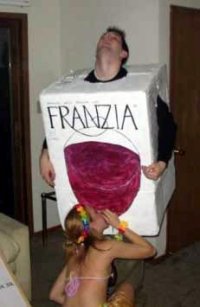
Restaurants take the hardest hit in terms of wine sales
The pinch of higher gasoline prices on American wallets is adding to the reluctance of consumers to go out for a drink or dinner and drinks--all of which is hurting on-premises sales.
History suggests people don't necessarily drink less during difficult economic times, but a survey done earlier this month indicates more folks are enjoying a glass of wine at home rather than dining and drinking out.
"Wine is more likely to be consumed in dining establishments, which have been more heavily affected by the downturn in the economy than bars or nightclubs," confirmed Danny Brager, vice president of client service for beverage alcohol at The Nielsen Company specializing in marketing and media information.
More than 40 percent of the bar managers, bar owners and bartenders surveyed by Nielsen and data services provider Bevinco noted a decrease in consumer traffic while 25 percent have observed a decrease in the number of drinks ordered, and 22 percent say customers are ordering less expensive drinks. Wine drinkers are choosing house varieties more often, according to 9 percent of operators.
Consumers also said they're cutting back. "During a survey we did in May, about 50 percent of consumers told us they were going out less often; and when it came to fine dining, that number went up to 66 percent," said Brager. "Considering on-premises sales usually account for half of all wine dollars spent, these declines are huge."
Restaurants have also been hit by cutbacks in business travel and entertainment budgets, added Jon Frederickson, president of wine industry analysts Gomberg Frederickson & Associates.
"With restaurateurs ordering less, distributors are being very conservative in their buying," Frederickson added. "So the shipments from wineries are soft from some regions."
Off-premises sales of wine in the U.S. remained healthy through June with increases in both the number of sales and volume. "Over the past few months, cheaper wines have started to make a comeback in terms of their sales growth while the sale of more expensive wines has slowed down," Brager noted.
The double-digit increases for $15 wines over the past few years have also disappeared. "Some consumers who were spending $15 are now thinking how they can save a couple of dollars and still get some very good wines at little bit lower price-points," Brager explained. "We see a trend towards buying wine at stores that offer deep discounts or promotions or the convenience of one-stop shopping." In fact, higher fuel prices have contributed to a 4 percent decline in shopping trips.
Although wine purchases still account for a small percentage of online shopping, these sales are increasing rapidly as people look for ways to avoid using their own cars, Brager added.
Frederickson said his firm has noticed that wine clubs are experiencing a membership decline and lower participation at events and on wine trips as people rethink how much they want to spend on wine and related outings that involve driving.
"Many wealthier individuals have seen their stock market portfolios drop about 20 percent in value over the past year, so they're less likely to spring for expensive wine," he added.
Frederickson doesn't see the higher input costs being faced by grape growers and wine producers as significantly driving up prices for consumers. "Your favorite bottle might go up 25 to 50 cents, and that might influence your decision to buy something else, but there's such an array of products at so many different price-points, and prices can vary by a dollar every week with discounts and so forth.
"Obviously if you're looking at a brand like Two Buck Chuck which costs $1.99 in California, even a 20-cent increase will put some pressure," he added. "But the people putting out that wine are enjoying some enormous sales growth because the category seems to be growing very rapidly this year as people seek bargains. During hard times, people still like their wine but some do trade down."
Higher fuel costs are having less of an impact in areas such as British Columbia where more than 80 percent of B.C. wine is sold within the province and more than 25 percent at local winery gates.
"Another 28 percent is sold through B.C.'s liquor stores but not a lot of this business is done in the most northern areas of the province," said Lisa Cameron, the British Columbia Wine Institute's communications manager. "I think the problem will be for volume exporters facing steeper transportation costs."
Brager said there's no question people are eating and drinking more at home, but they still appear to want affordable luxuries. "So I think the wine category will fare relatively well, but markets need to adjust because there will still be consumers shifting product choices to stretch their dollar."
Frederickson agreed. "Yes, higher fuel prices and the economic slump are affecting on-premises sales, but people are still drinking their wine," he said. "They might be trading down, but we might also see them springing for a $12 or $20 bottle as a luxury item that's still affordable even during hard times."
Julie Gedeon



